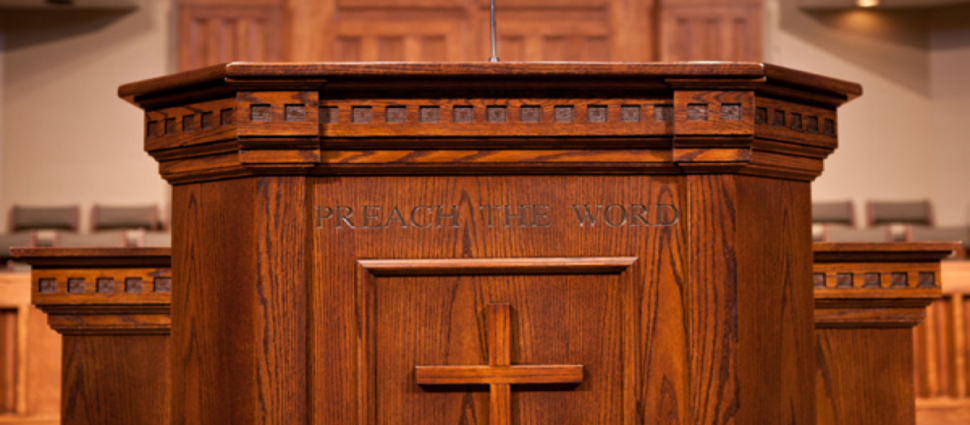What Does Your Pulpit (Or Lack of One) Communicate to the Congregation?

‘After the hymn, the minister will ascend the stairs into the pulpit for the Scripture reading, pastoral prayer, and sermon.’ What role does the physical pulpit have in a local church? For most of my life, I attended churches where the pulpit was moved around, wheeled in, carried out, or was a simple music stand. Thoughts about the pulpit – it’s role, placement, and significance – weren’t something I had given much time to yet. But as I began preaching in different churches (in Canada, Scotland, and the United States of America), and as my work took me to visit different churches around the United Kingdom and North America, I began to notice the church pulpit more.
From the grand pulpit at the Independent Presbyterian Church in Savannah, Georgia to my local Free Church (of which I am a member), the pulpit was a central and primary feature of the architecture. A raised, wooden platform and pulpit, almost immovable, in which the minister would stand to lead the public worship of the church in prayer, praise, and preaching.
Throughout Reformed Church history, the pulpit has played a central role in church architecture. In Scotland, whether it be Abbeygreen Church (built in 1843 after the Disruption) to the South, St Columba’s Free Church (built 1843–45) on the Royal Mile, or Tain Free Church (built in the early 1900’s) in the North, the pulpit was a large, raised feature – prominent, unmissable, communicating the central place and importance of the preached Word in Reformed worship.
As times change, architecture changes too. Old churches are torn down due to damage or renovated to be suitable for more ‘modern’ ministry, or new buildings are built to reflect a church fit for ministry in the twenty-first century. As the changes progress, the grand old pulpits begin to dwindle. In some churches, the pulpits remain as a testament to the past but seldom get stood in, let alone preached from. In others, the pulpit is removed altogether and the floorplan modernized to become a bland ‘multi-purpose space’. Where a large wooden pulpit once stood, a small plexiglass lectern now takes its place, or sometimes nothing at all.
As churches ‘catch up with the times’ and appeal to a more modern mindset, as pulpits and permanent visual reminders of the importance of the Word are removed, what is being communicated to our congregations? To the watching world? An insider’s perspective (my own) seems to view it with bleak suspicion. If, as the old adage suggests, ‘as goes the pulpit so goes the congregation’, what are we to expect of congregations when there is no pulpit left?
While we may not be placed to undergo a project to build-in a large scale pulpit like the days of old, we can still find ways to ensure the pulpit – and the Word – finds primacy of place in our worship gatherings. Centralized pulpits, even only slightly raised, helps to emphasize that this is what we’re here for. I was pleased to worship with the friendly folks at Antioch Presbyterian Church in Spartanburg, South Carolina, in recent memory – a small, no frills church with a pulpit of prominent placement in the center of the room.
The Ministry of the Word has fallen on hard times – people grumbling to gather together in a majority of churches now for a thirty-minute sermon (if that!) once a week. No doubt, the Word does the work – pulpit or no – but there are visual cues we can give that the Word is still fundamental to our faith and our practice. Bring back the pulpit – bring back the central importance of Word ministry – and the church may well follow..
Colin Fast is the editorial manager at Christian Focus Publications in the Highlands of Scotland and a regular supply preacher in local churches. He and his family are members of Tain and Fearn Free Church of Scotland.




